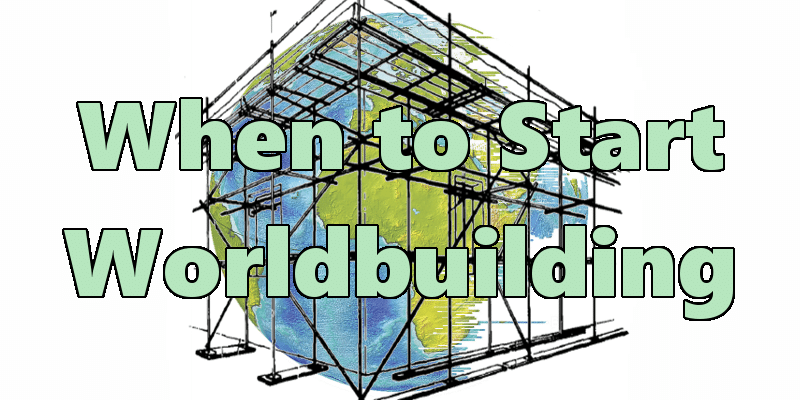
One question that an aspiring worldbuilder is going to ask is when to start. Can you build a world without knowing anything about the story you’re going to tell in it? Do you need any characters before you build a world for them to inhabit?
Actually, you have options.
From a Blank Slate
You can, in theory, begin with the beginning. Imagine a cosmic void, and design a world from scratch. What sort of world do you want? This starting point allows for flights of fancy, from clusters of asteroids with a cloud of breathable atmosphere surrounding them to a planetwide arboreal paradise. This is like playing with Legos but not using any instructions.
Pro: You can put all your imagination into piecing together a believable world with no barriers to your creativity. If you like big-picture fantasy and sci-fi with alien worlds that feel truly alien, this is the way to go. Discworld and Ringworld are prime examples of this.
Con: There are two traps with this method. By starting from the world, you risk making the world the most interesting thing about your story. While on the surface that might not sound like a bad thing, but readers won’t identify with a world the way they will a relatable character. It can also leave you without a strong plot to carry the action if your story focuses too heavily on the world itself. You also risk hemming in your storytelling by designing in limitations without considering the consequences. For example, travel in the world comprised of an asteroid cluster would be far more complex than simple roads and sailing ships. Maps couldn’t be two-dimensional and convey a proper sense of navigation.
Plot and Premise
Most often, a story will begin with a premise. When asked to describe your story idea, you can usually narrow it down to something like “Game of Thrones meets CSI: New York” or “Crouching Tiger, Hidden Dragon but with vampires.” You might have a general idea of a plot, even if it’s something as basic as Romeo & Juliet or the Monomyth (i.e. Hero’s Journey).
So with those in hand, you can start building a world to tell that story. With the first example, maybe you have a version of New York in a pseudo-medieval era, or perhaps you come from the opposite direction and bring politics and murder into a modern setting, with the crime scene investigators sifting through the aftermath. Knowing what story the world is going to tell can give you great guidance in what you need from it.
Pro: This is actually a very stable place to start worldbuilding. You know what sort of story you want to tell, so you can craft a world with that story in mind. The more you know about the story, the more guidance you have in what the world will look like.
Con: That same certainty about what the world needs to do can also limit you creatively. If you want your world to stand out, you’re going to have to force it off the tracks of the same train everyone else is riding. When people mention fantasy and medieval castles spring to mind, this is railroad thinking at work.
Character and Arc
You can identify the story you tell by the protagonist and the journey they are going to take from start to finish. If you want a hero to overthrow a despotic government, you already know that such a government is going to exist in your world. If you want a woman to break gender stereotypes, you need to start with a world that has those prejudices. By identifying the conflict and key players, you know the sort of world that conflict can occur within.
Pro: As with starting from a premise, knowing the character side of the story ahead of time gives you an idea of the “musts” for your world. With fewer major decisions up in the air, it’s quicker to get the rest of your world’s basics nailed down.
Con: If you focus too closely on a character’s journey, it’s easy to build a world that feels small. While you never want to build a whole world (which is essentially an impossible task anyway), you want enough hints that such a world exists around your story. These hints can fall by the wayside when you’re building along a paved path ahead of your characters.
Everything But the World
Well, I suppose by this point you have to build the world or just set your story on Earth.
Pro: You know exactly what you need out of your world.
Con: Well, you’ve put off your worldbuilding until last, so it’s the aspect of your story that leaves you the least creative control. Something has to come last, of course, so it’s always going to be a tradeoff. But by figuring out all your non-worldbuilding story aspects before you start creating your story world, you’re unlikely to come up with an inspiring, imaginative world that still works with all your predefined elements.

0 Comments